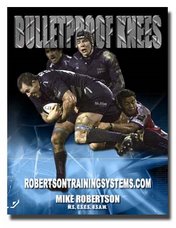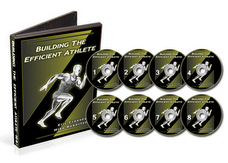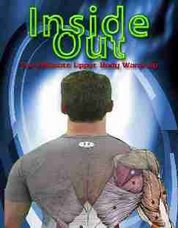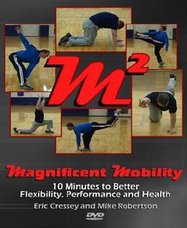A concept that I’m asked about quite frequently is using strength training to improve posture. As Eric discusses in our Building the Efficient Athlete DV D series, the law of repetitive motion definitely comes into play. Of course we need to address posture via behavior modification, but strength training gives us a great return of investment as well.
In its simplest format, we can use strength training to counteract what goes on with us the other 23 hours of the day; but, the key is in proper exercise selection. If your “corrective exercises’ consist of bicep curls and bench presses, you’re not going to see much return on your investment. However, if you use better exercise selection including exercises like front squats, Zercher squats, face pulls, etc., you can use strength training as a viable means to correct posture.
Another question that’s always brought up is, “When can I go back to regular training?” The answer? Maybe never! This doesn’t mean you can’t include your favorite exercises, but maybe you need to decrease the focus on them, or only include them at certain points in your yearly plan. Here’s an example using the bench press.
We know that people like to bench press, especially powerlifters as it’s one of their competitive events. With the focus on bigger and better gear, many have shifted to twice weekly training for the bench press: a raw, full range of motion day, and a heavy lockout day. This can be extremely hard on the shoulders, especially as it reinforces rhomboid dominance around the scapulae. So what do we do here? Forget about training the lockout?
Instead, what you could do is perform “bench” training twice per week – one day still being a true bench press day, the other focusing on closed-chain, weighted push-up variations. This will still overload the triceps, while allowing us greater activation and strengthening of the serratus and rotator cuff. Do this for 3-4 months, and then take the last 2-3 months of training to focus on the lockout. After the meet, return to the push-up variations.
Better exercise selection reinforces better postures while lifting, but it also allows for better posture outside of lifting as well. In essence, when you have optimal alignment and strength train appropriately, the strength training further “cements” that ideal posture. You see the opposite as well; when someone has flawed posture, every lift they perform will be compensated for in some form or fashion, further cementing and reinforcing their flawed posture and movement.
Stay strong
MR
High Octane Corrective Exercise and Performance Enhancement | www.RobertsonTrainingSystems.com
Subscribe to:
Post Comments (Atom)








No comments:
Post a Comment